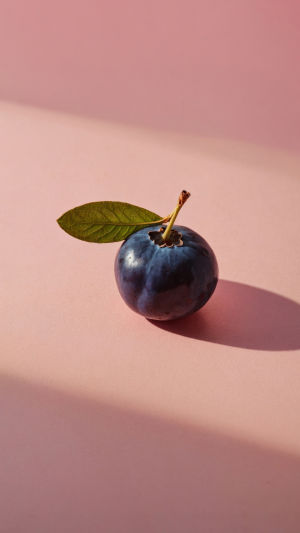Blueberries are a favorite fruit for many people, not just because they taste great but also because of their beautiful blue color.
Have you ever wondered why blueberries look blue? The answer is more interesting than you might think!
<h3>Color in Nature</h3>
In nature, colors come from two main sources: pigments and structural features. Pigments are substances that absorb certain colors of light and reflect others, giving things their color. For example, the green color of leaves comes from a pigment called chlorophyll. However, blue is a rare color in fruits and plants, often created by something called structural coloration.
<h3>What is Structural Coloration?</h3>
Structural coloration happens when tiny structures in a material interact with light. Instead of relying on pigments to create color, these structures scatter light in specific ways. This is how some butterflies and peacock feathers get their bright colors without using pigments.
<h3>The Waxy Coating of Blueberries</h3>
Recent research has shown that the blue color of blueberries comes from a special waxy coating on their skin. This wax is not just for show; it plays an important role in protecting the fruit. The wax contains tiny crystals that scatter light, especially blue and ultraviolet (UV) light. When light hits the blueberry, the way these crystals are arranged causes the fruit to look blue to our eyes.
<b>1. Pigments Inside:</b> Blueberries do have pigments called anthocyanins, which can give them a reddish or purple color. However, when you look at a blueberry, the blue you see is mostly due to the waxy coating on the outside.
<b>2. Light Scattering:</b> The wax layer is very thin—about two microns thick—and its tiny structures are arranged in a way that scatters shorter wavelengths of light (like blue) more than longer wavelengths (like red). This scattering effect is what makes blueberries appear blue.
<h3>Why Does This Matter?</h3>
Understanding why blueberries look blue can help us in several ways:
• Natural Beauty: It shows how nature uses clever designs to create beauty without relying solely on pigments.
• Sustainable Products: Scientists might be able to use this knowledge to create natural and eco-friendly colors for products like paints or cosmetics.
• Plant Protection: The waxy coating may also help protect blueberries from pests and diseases, keeping them healthy.
<h3>Conclusion</h3>
The blue color of blueberries is a wonderful example of how nature works in unexpected ways. By using structural coloration instead of just pigments, blueberries not only attract us with their color but also protect themselves. Next time you enjoy this tasty fruit, you can appreciate the science behind its beautiful blue hue!
Blueberries Benefits Are Insane And Here Are The 15 Reasons To Eat Blueberries Every Day
Video by Horizons Health





